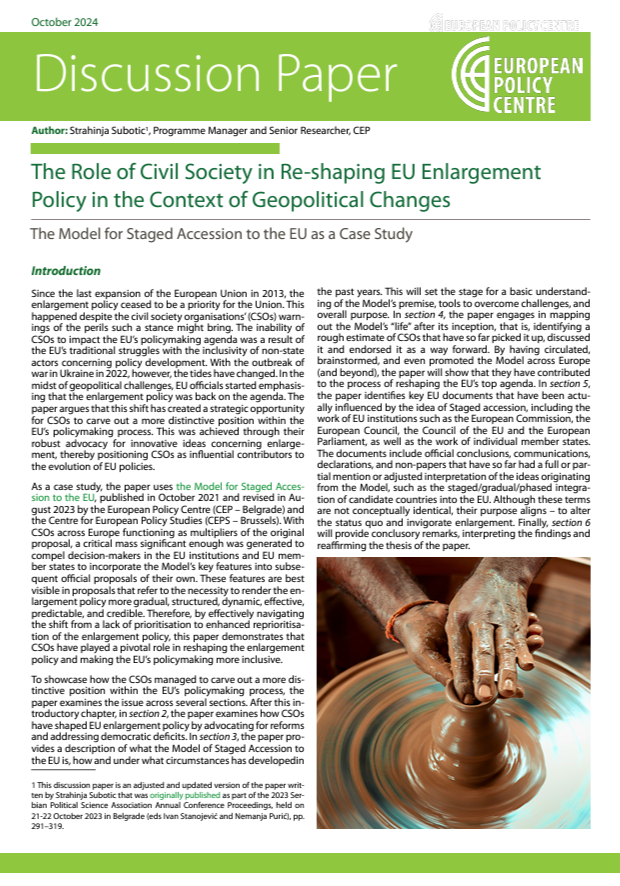Headquarters: Svetog Nauma 7, 11000
Office address: Đorđa Vajferta 13, 11000
Phone:: +381 11 4529 323
The perspective of Serbian membership in the EU was born after the Thessaloniki Summit in 2003, but almost twenty years afterwards, it remains an unfinished project. In the case of Serbia, several issues that prevented the accession process from ending successfully can be identified. On the one hand, there are internal problems that prevented or slowed down Serbia from progressing on the path towards membership.
Cooperation with the International Criminal Tribunal for the former Yugoslavia (ICTY), the disintegration of the State Union of Serbia and Montenegro, the secession of Kosovo, the inability to strengthen the rule of law, and the democratic backsliding are the main developments that characterise Serbia in the previous 20 years. On the other hand, in the same period, the EU was faced with absorbing 13 new Member States, the global economic crisis, terrorist threats and attacks, the migration crisis, BREXIT, democratic backsliding in Member States, the Covid-19 pandemic and the war in Ukraine. Many of mentioned challenges are shared challenges for Serbia and the EU, such as global economic crisis, migration crisis, pandemic, and the war in Ukraine. All these events have clearly affected the EU enlargement policy, which has not been as successful as it had been before 2004.
The road of Serbia toward full membership has been bumpy to date, marked by lack of progress and a troubled relationship between the two parties. The Model of staged accession was proposed in October 2021 to help re-dynamize the EU accession process for the candidates, while simultaneously enabling the EU to conduct internal reforms without the need to postpone a new round of enlargement. This paper aims to provide an in-depth view of how the Model, if applied, would affect Serbia’s EU accession process. Therefore, it analyses how the Model could be practically implemented by identifying the drawbacks in the EU’s current approach to enlargement, pin-pointing the country-specific concerns when it comes to the potential application of the Model, providing stakeholder analysis, assessing the level of preparedness for the membership by quantifying ratings of the 2022 Annual Commission report, and identifying what needs to be done for Serbia to progress per stage.
This paper is part of the National Issue Paper Series developed within the project “Support for further development of the model of the Western Balkans staged accession to the European Union“ implemented by the European Policy Centre (CEP – Belgrade) and the Centre for European Policy Studies (CEPS – Brussels). The Project is funded by the Open Society Foundations (OSF).


